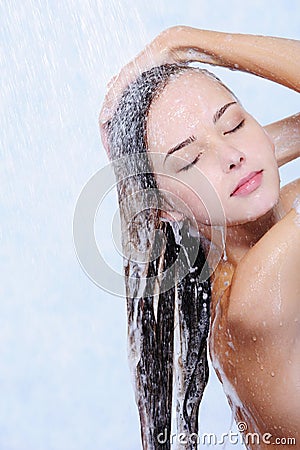Good cleansing removes the impurities, bacteria and dead cells that accumulate on
much of the lubricating natural oil (or sebum) as possible. A cleanser should
therefore be gentle and natural. Use a non-lathering cleansing. Massage in circular
movements over the face and neck. Leave on for 1-2 minutes to dissolve grime and
old make-up. Then gently wipe off with cotton swabs. Rinse off with warm water.
Once in a while, or on a more regular basis for those with oily skin, a clay or fruit or
oat-based cleansing mask used for a deeper cleansing action.
Step 2: Herbal facial steam
One traditional and very simple way to deep clean the skin is to steam your face for a few minutes. Steaming removes dirt and pollution very efficiently from the skin, but it removes important natural oils as well. So, although the technique brings excellent results on an oily skin or anyone suffering from acne, most skin types must bear in mind that in the long term it has a drying effect.
Steaming should therefore be used very occasionally on a dry or aging skin (once in a month is the maximum) and never for more than 2-3 minutes. On a oily skin, it can be done once a week, and for 5-8 minutes. For a combination skin, 2-3 minutes once a week is recommended maximum. A normal skin will benefit form an occasional steaming (every two weeks) as long as the exposure to steam is not prolonged (5minutes maximum). It is not recommended for extremely sensitive skins.
Select a herbal facial steam that's best for your skin type.
Bring the dry herbs (lavender, chamomile, lemon grass, rosemary, etc.) to a boil in a
large pot of water. Remove from heat source; steam for 5 minutes. A facial steam is
the best possible way for deep pore cleansing, and each of the herbs used in rich in
nutrients that nourish and tone the skin. Immediately after your facial steam, rinse
your face with cold water.
Steaming should therefore be used very occasionally on a dry or aging skin (once in a month is the maximum) and never for more than 2-3 minutes. On a oily skin, it can be done once a week, and for 5-8 minutes. For a combination skin, 2-3 minutes once a week is recommended maximum. A normal skin will benefit form an occasional steaming (every two weeks) as long as the exposure to steam is not prolonged (5minutes maximum). It is not recommended for extremely sensitive skins.
Select a herbal facial steam that's best for your skin type.
Bring the dry herbs (lavender, chamomile, lemon grass, rosemary, etc.) to a boil in a
large pot of water. Remove from heat source; steam for 5 minutes. A facial steam is
the best possible way for deep pore cleansing, and each of the herbs used in rich in
nutrients that nourish and tone the skin. Immediately after your facial steam, rinse
your face with cold water.
Step 3: Facials
Facials are excellent for stimulating circulation to the skin. It brings fresh blood to the skin. They promote deep pore cleansing and help heal blemishes and acne. Facials also help tone and firm the skin.
They are several kinds of facials available. You can try some homemade facial masks (clay mask, honey mask, egg mask, oats mask, fruits and vegetables mask, etc) to get a beautiful skin.
They are several kinds of facials available. You can try some homemade facial masks (clay mask, honey mask, egg mask, oats mask, fruits and vegetables mask, etc) to get a beautiful skin.
Step 4: Tonic astringents
When the facial is completely dry, rinse off with warm water. Be gentle to your skin while rinsing of the facial material. Use soft, circular motions. Massage your skin; do not scrub it. Immediately after rinsing the facial, apply an astringent preparation to tone and close the pores.
Step 5: Moisturizer
Dot the skin with moisturizer and gently massage it in smooth circular movements.
Try to do this slowly as it allows you to massage the skin and relax yourself. Apply
vitamin E oil or, a small amount of eye cream around the eyes and gently pat it in
with your finger. The tapping action helps relieve puffy eyelids and also stimulates
the acupressure points around the eyes.
















